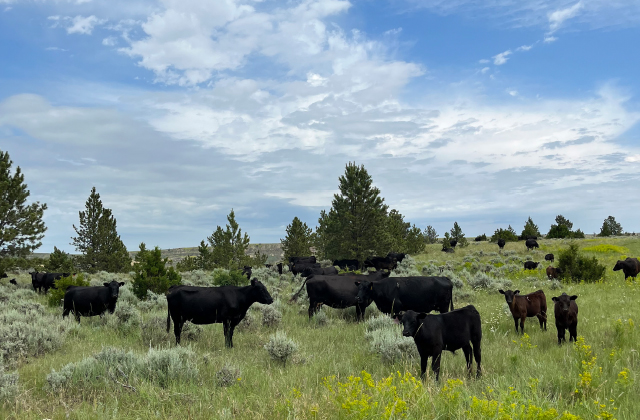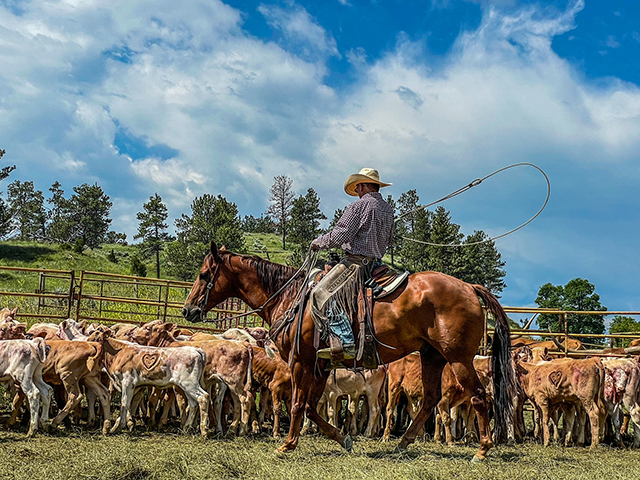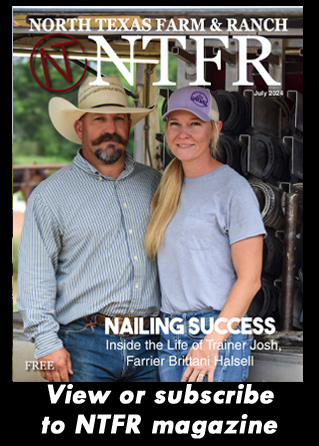Farm & Ranch
Meanwhile, Back at the Ranch…

By Rayford Pullen | [email protected]
Fall has arrived according to the calendar and with that comes fall calving, weaning spring born calves and getting ready for the quickly approaching change in seasons once again. If you are in Bermuda grass county, we normally expect it to quit growing around Oct. 20 which is when nighttime lows begin hitting that 45-degree mark. While the quality of the forage will remain good, we just stop accumulating more forage.
This is not all bad as it allows our newly-sown fall pastures to begin growing as the competition for sunlight is now in the fall seeded crops favor, assuming the Bermuda grass is short. Being successful with overseeded fall pastures is dependent upon them being able to have sunlight as well as moisture with sunlight normally being the limiting factor. Just remember, grasses don’t grow in the shade.
Around here, we will continue to let our cattle graze the overseeded pasture, if it is four-plus inches tall or better, to help get our fall seeded pastures going. Once that occurs, we will take them off that pasture to allow it to accumulate knowing that the days are getting shorter and temperatures are getting lower which slows down plant growth.
To read more, pick up a copy of the October issue of NTFR magazine. To subscribe by mail, call 940-872-5922.
Farm & Ranch
Ag Elsewhere: Wyoming

By Tressa Lawrence
Ranchers across northeast Wyoming and the surrounding areas saw record moisture levels in 2023. The year 2024 has seen significantly less moisture to date.
Farm & Ranch
Ag Elsewhere: Montana

By Lindsey Monk
People are finishing up brandings. Here, Danny Walter is shown getting it done.
Farm & Ranch
Animal Disease Traceability

By Barry Whitworth, DVM
On July 6, 2020, the United States Department of Agriculture Animal and Plant Health Inspection Service (APHIS) posted in the Federal Register a proposal that radio frequency identification tags be used as official identification for cattle and bison. Following a period for public comment, the USDA APHIS released a statement on April 24, 2024, with the amended animal disease traceability (ADT) regulation for cattle and bison. The full press release may be found at https://www.aphis.usda.gov/news/agency-announcements/aphis-bolsters-animal-disease-traceability-united-states. Under the new rule, cattle and bison will need to be identified with tags that are both visual and electronic.
The USDA defines ADT as knowing where diseased and at-risk animals are, where they have been, and when the animal disease event took place. A system that allows for efficient traceability of livestock in the United States is essential for animal health and reducing the economic effect of a foreign animal disease outbreak and other diseases on livestock producers as well as others whose well-being depends on livestock production.
To read more, pick up a copy of the July issue of NTFR magazine. To subscribe by mail, call 940-872-5922.
-

 Country Lifestyles1 year ago
Country Lifestyles1 year agoScott & Stacey Schumacher: A Growth Mindset
-

 Country Lifestyles7 years ago
Country Lifestyles7 years agoStyle Your Profile – What your style cowboy hat says about you and new trends in 2017
-

 Equine10 months ago
Equine10 months agoThe Will to Win
-

 HOME7 years ago
HOME7 years agoGrazing North Texas – Wilman Lovegrass
-

 Country Lifestyles4 years ago
Country Lifestyles4 years agoAmber Crawford, Breakaway Roper
-

 Outdoor9 years ago
Outdoor9 years agoButtercup or Primrose?
-

 Country Lifestyles8 years ago
Country Lifestyles8 years agoDecember 2016 Profile, Rusty Riddle – The Riddle Way
-

 Country Lifestyles8 years ago
Country Lifestyles8 years agoJune 2016 Profile – The man behind the mic: Bob Tallman






